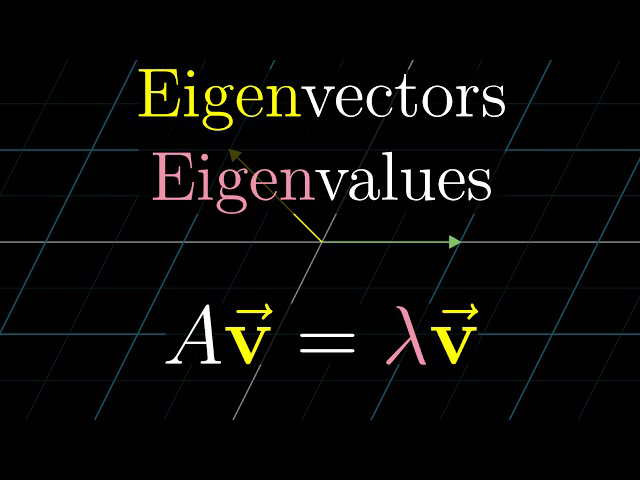🔬 A Deep Dive into Vector Spaces: The Essence and Core Meaning of Eigenvalues, Eigenvectors, and the Eigendecomposition
At the heart of linear algebra lies a powerful set of concepts that not only unlock deep geometric insights but also form the mathematical backbone of modern data science, physics, and machine learning: eigenvalues, eigenvectors, and eigendecomposition.

📐 What Are Eigenvectors and Eigenvalues?
In simple terms, an eigenvector of a square matrix is a non-zero vector whose direction remains unchanged when that matrix is applied to it. It may get stretched, compressed, or flipped, but it still points along the same line.
Mathematically, for a matrix A and a vector v, if:
A * v = λ * vthen:
vis the eigenvectorλ(lambda) is the eigenvalue corresponding to that eigenvector
🔄 Why Are They Important?
Eigenvectors and eigenvalues reveal the invariant properties of linear transformations. They help us understand how a transformation acts geometrically — which directions it stretches or compresses, and by how much.
This has wide-ranging applications:
- Principal Component Analysis (PCA) in machine learning
- Stability analysis in control theory and physics
- Graph analysis via spectral clustering
- Quantum mechanics to find stable states of systems
🧩 The Geometric Interpretation
Imagine a transformation like rotating, stretching, or squashing a vector space. Most vectors will change direction under this transformation. But a few special ones — the eigenvectors — stay aligned to their original direction. The eigenvalues tell you how much they’re scaled.
If an eigenvalue is:
- Greater than 1: the vector is stretched
- Between 0 and 1: the vector is compressed
- Negative: the vector flips direction
- Zero: the transformation collapses that direction completely
🧠 What Is Eigendecomposition?
Eigendecomposition is the process of breaking a matrix into its eigenvalues and eigenvectors — essentially exposing its core structure.
For a diagonalizable matrix A, it can be decomposed as:
A = V * D * V⁻¹Where:
Vis a matrix whose columns are the eigenvectors ofADis a diagonal matrix with eigenvalues ofAon the diagonalV⁻¹is the inverse ofV
This decomposition is like rewriting the transformation in its “native language”. Once in this form, it's easy to raise A to a power, simulate dynamics, or perform data compression.
